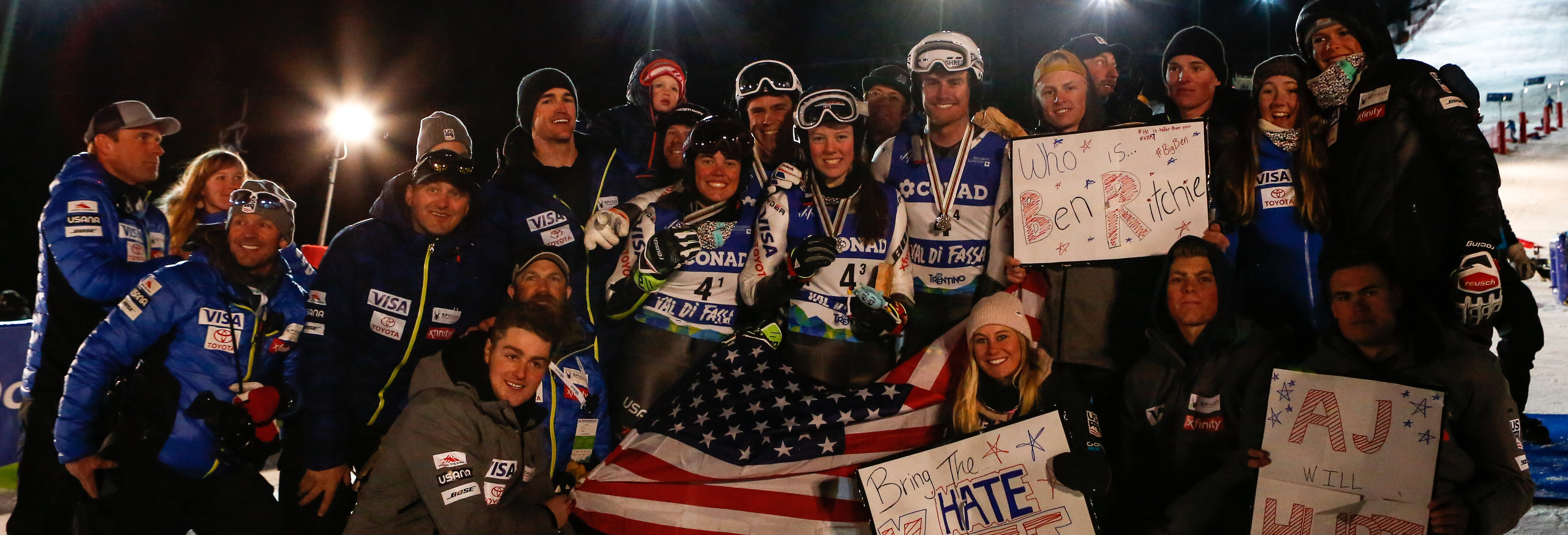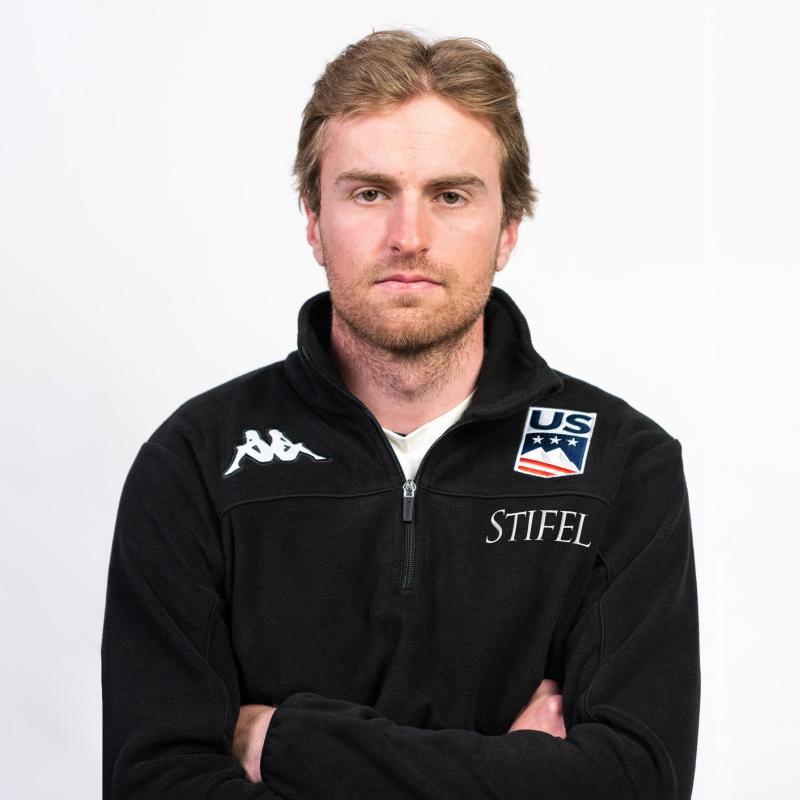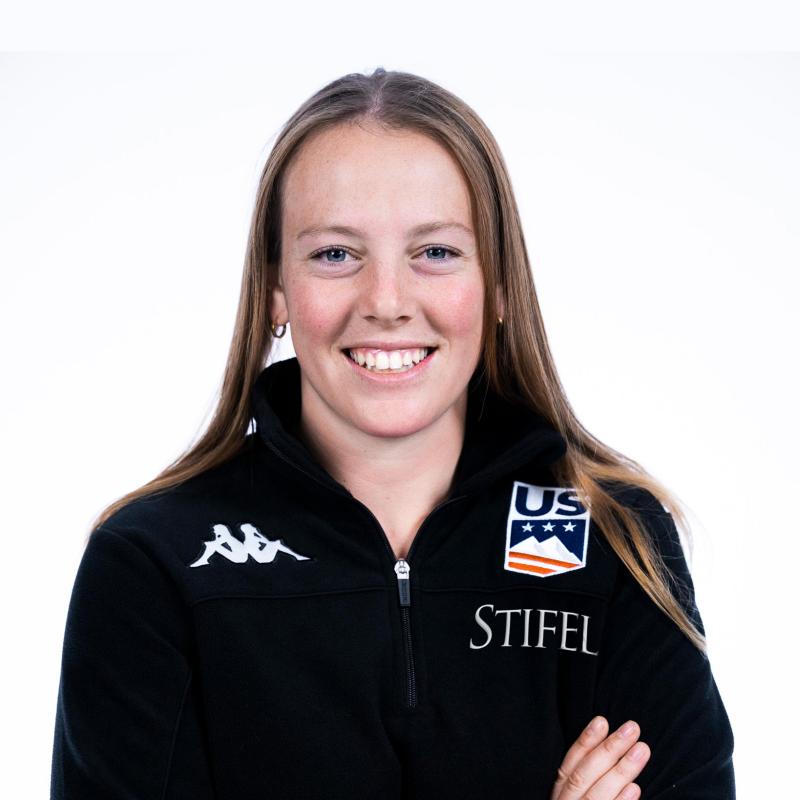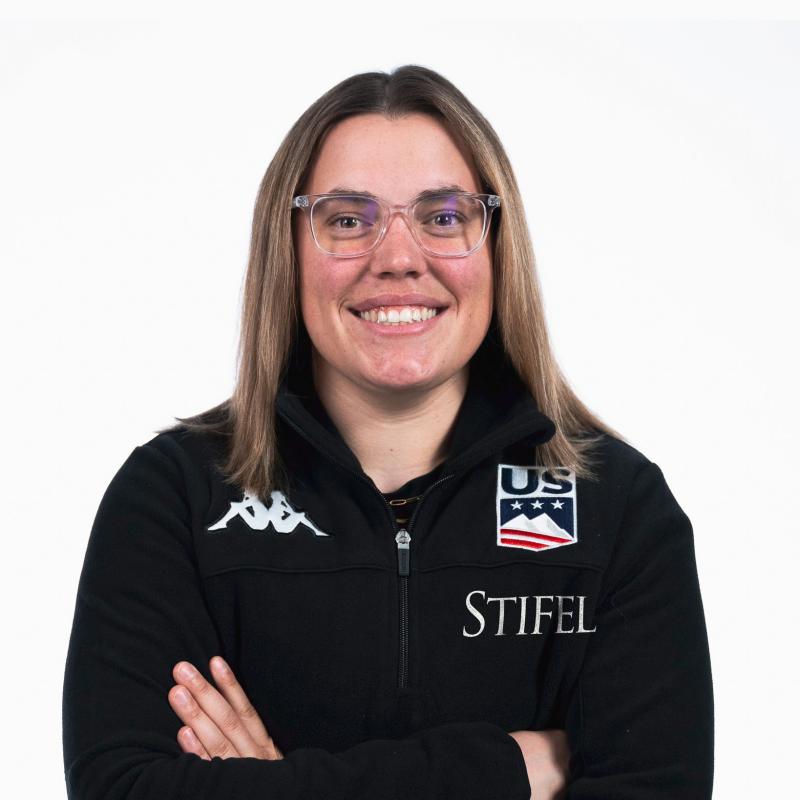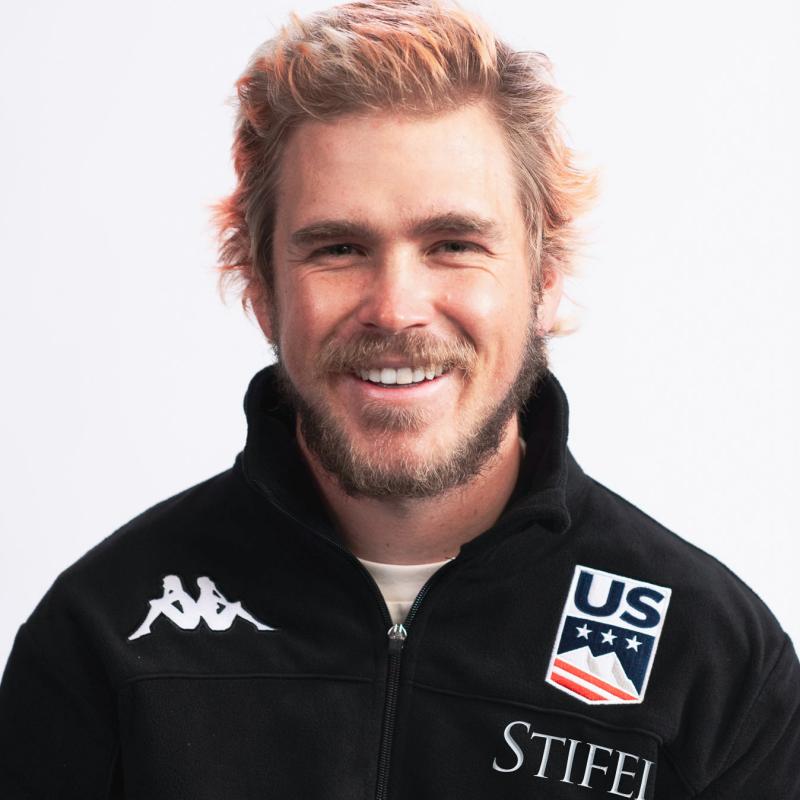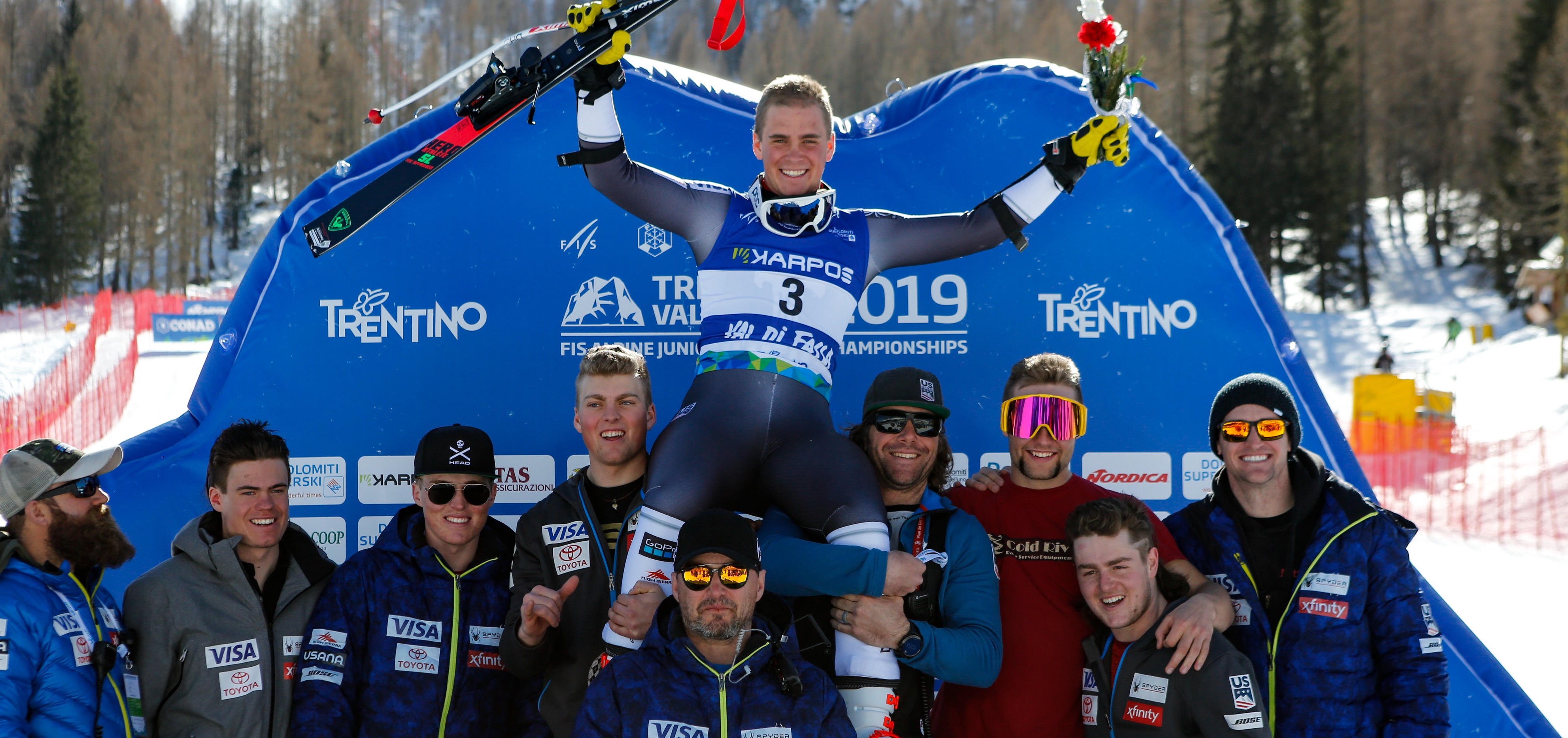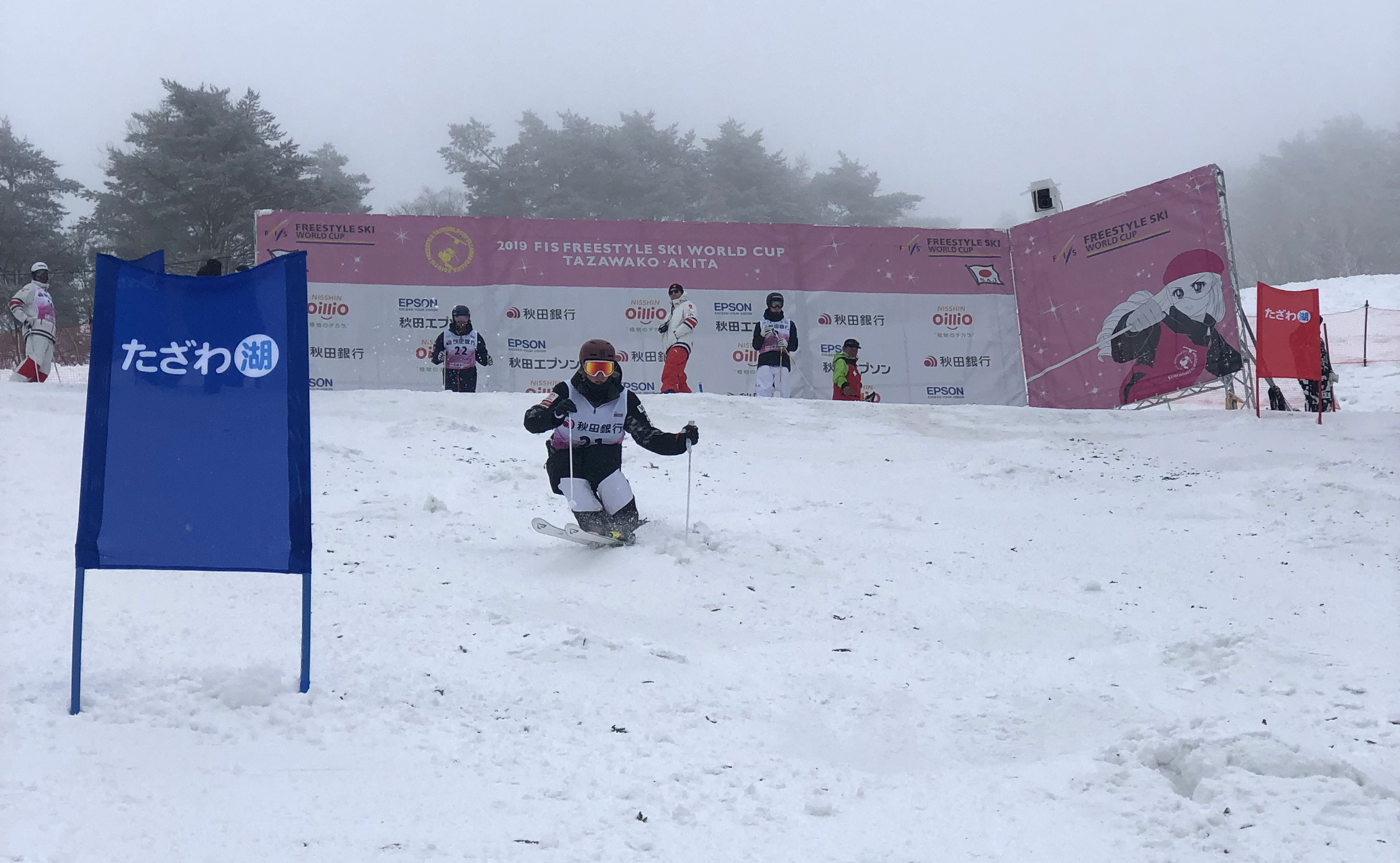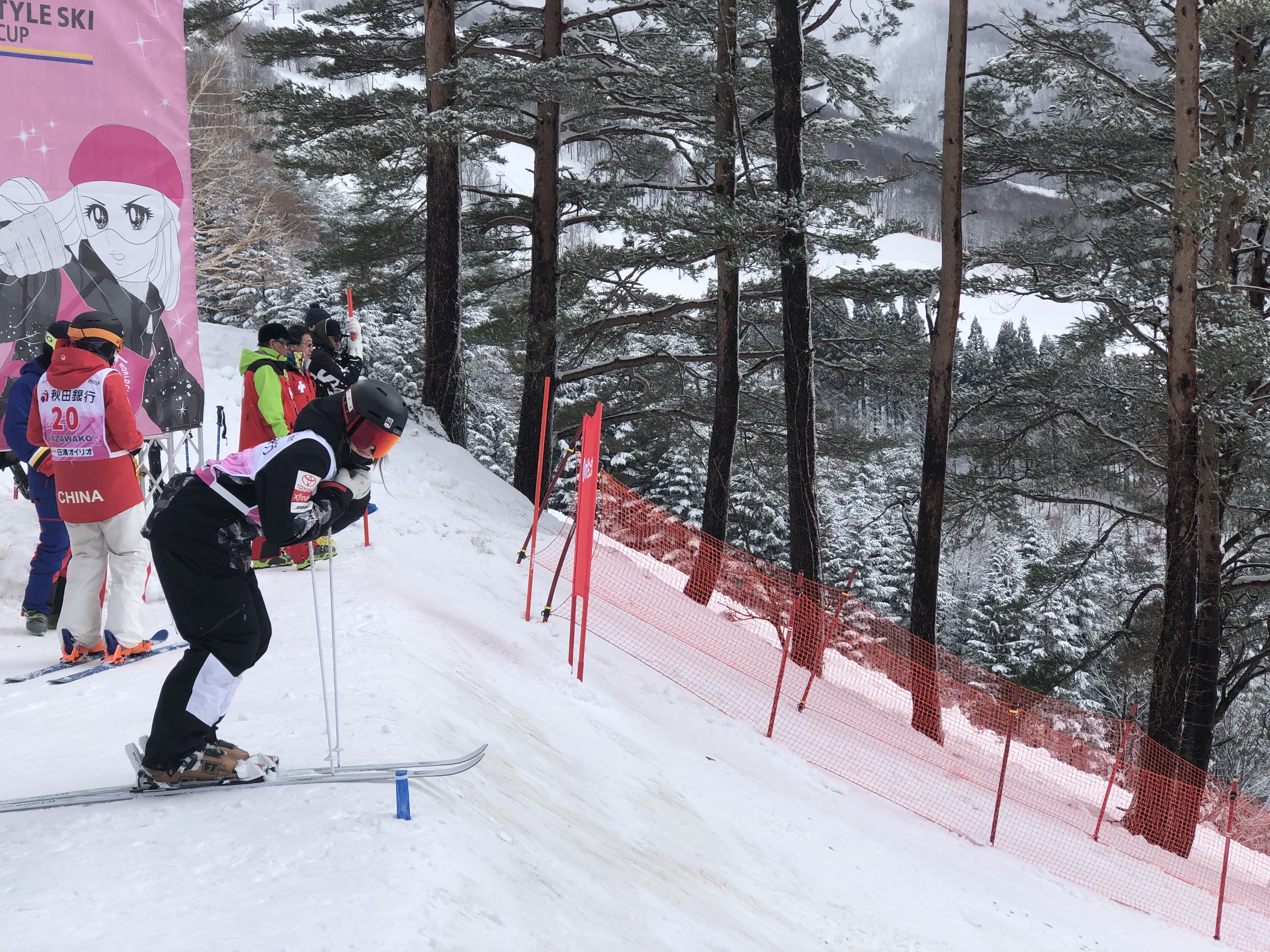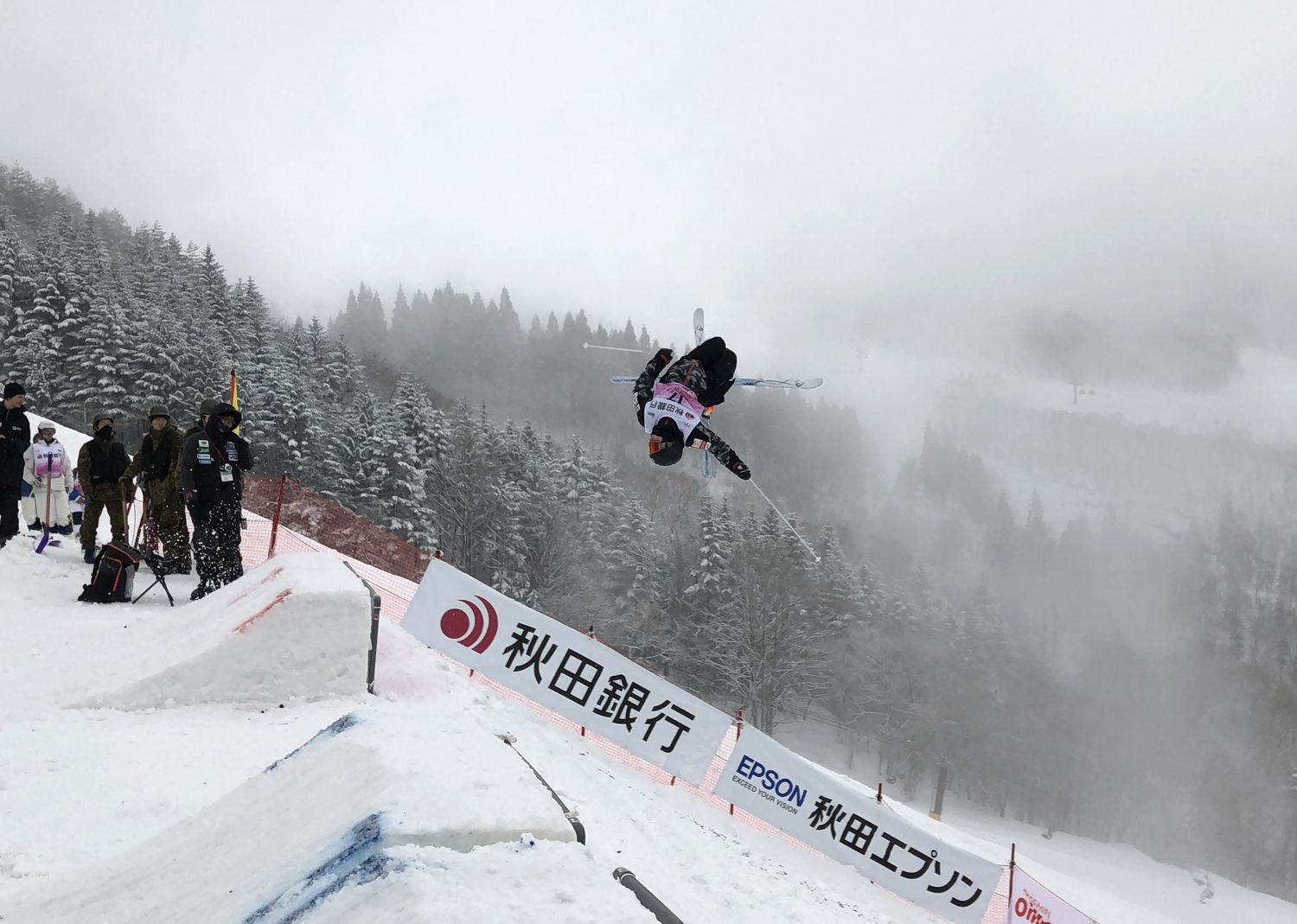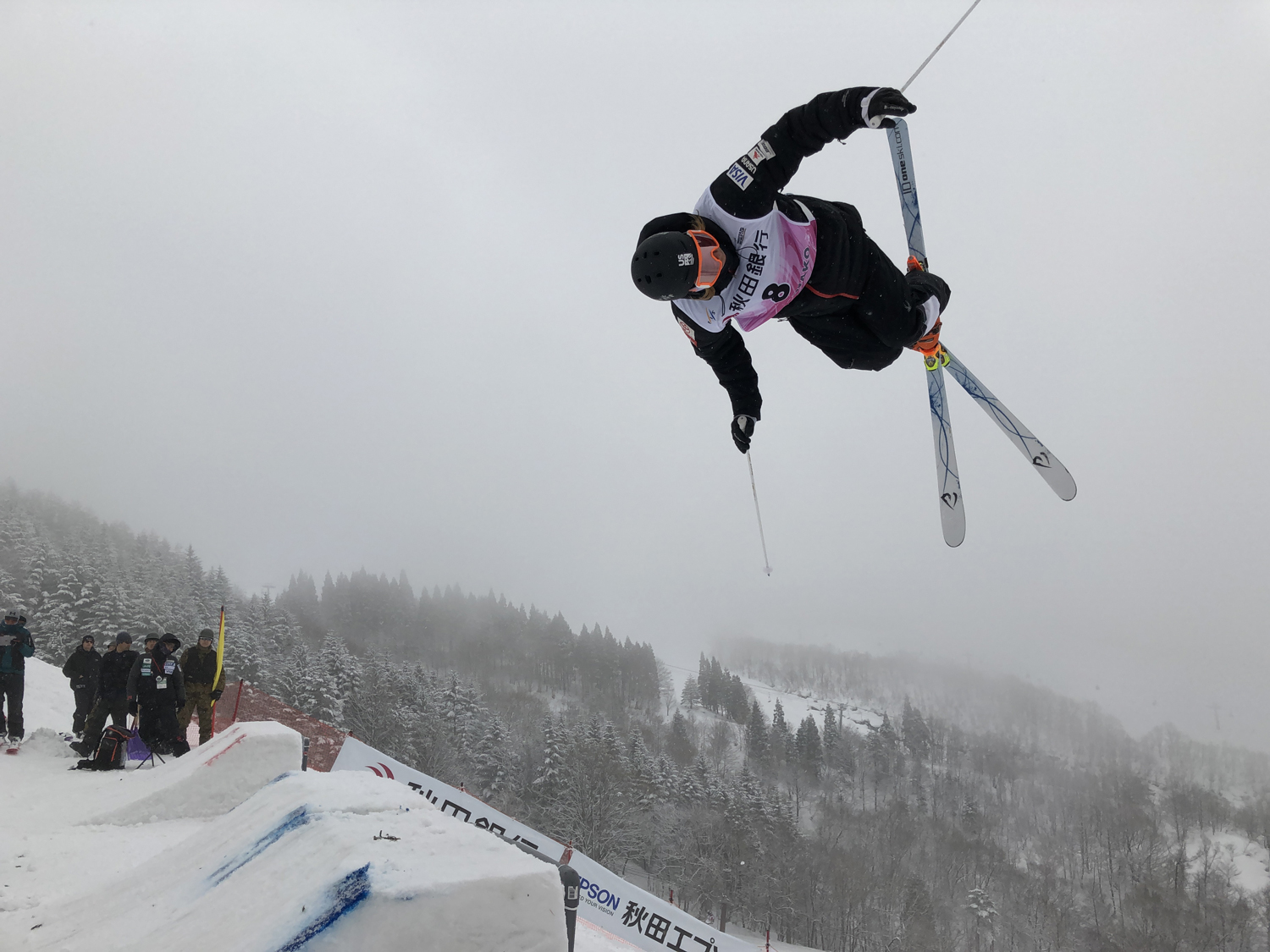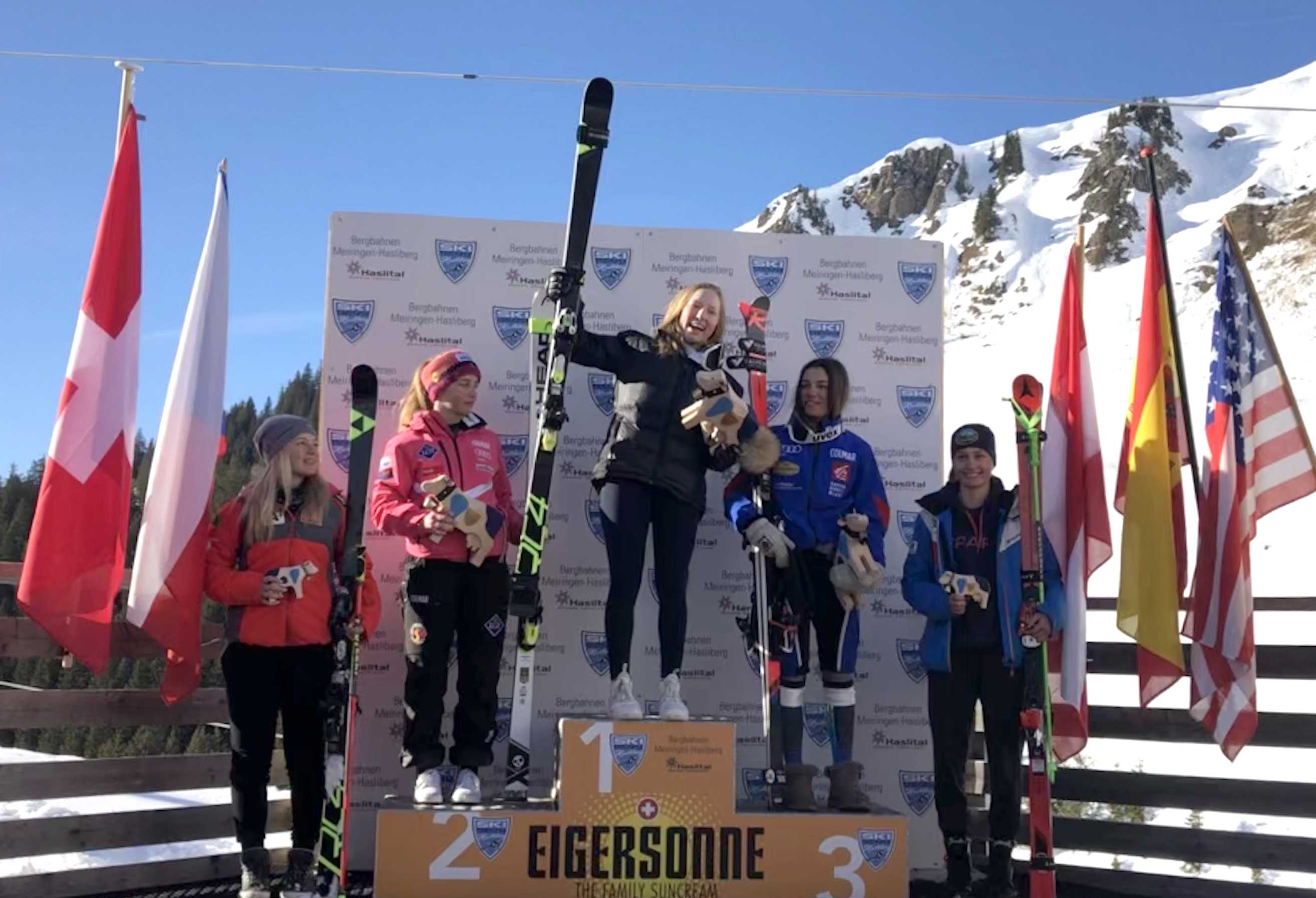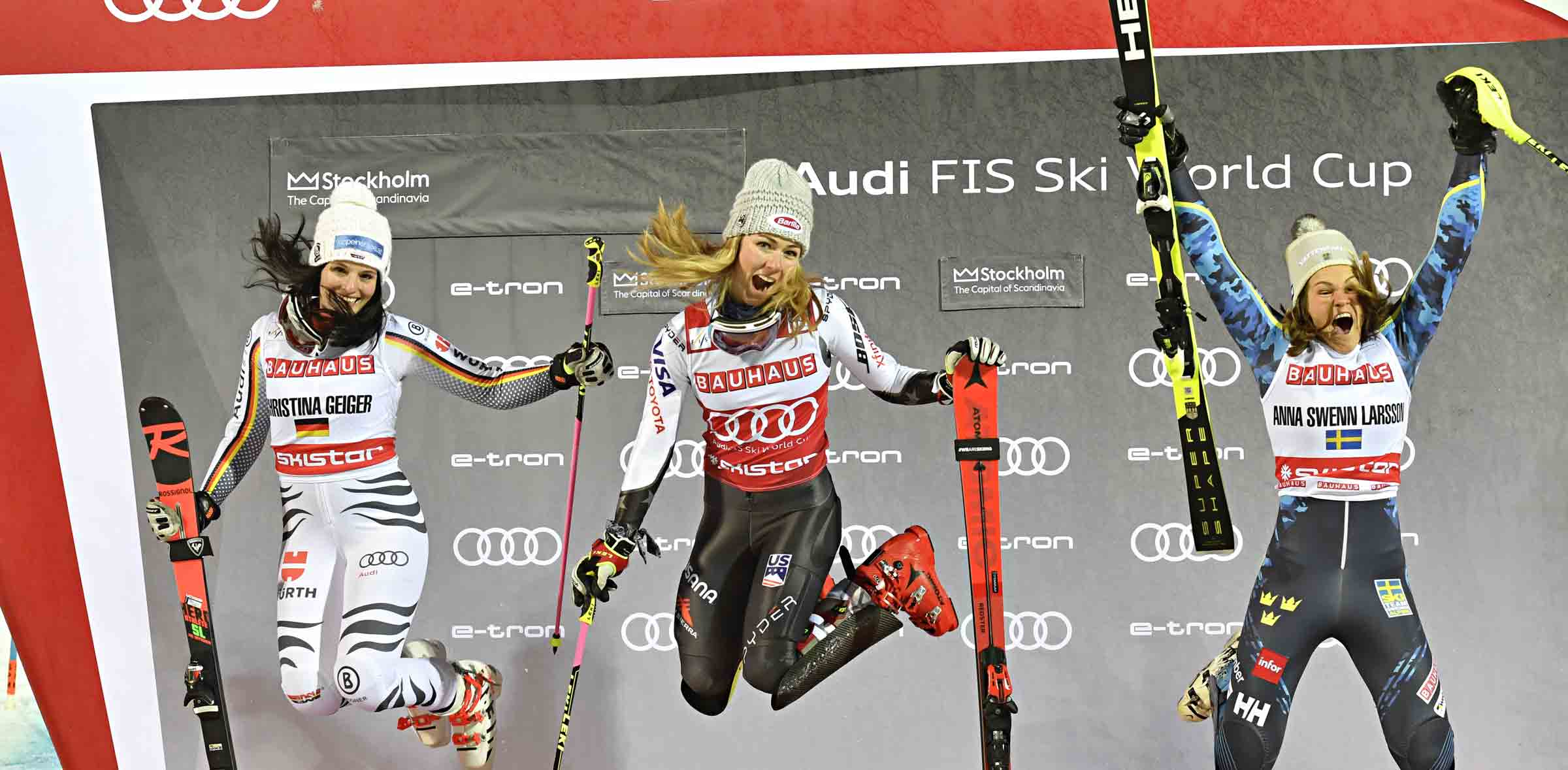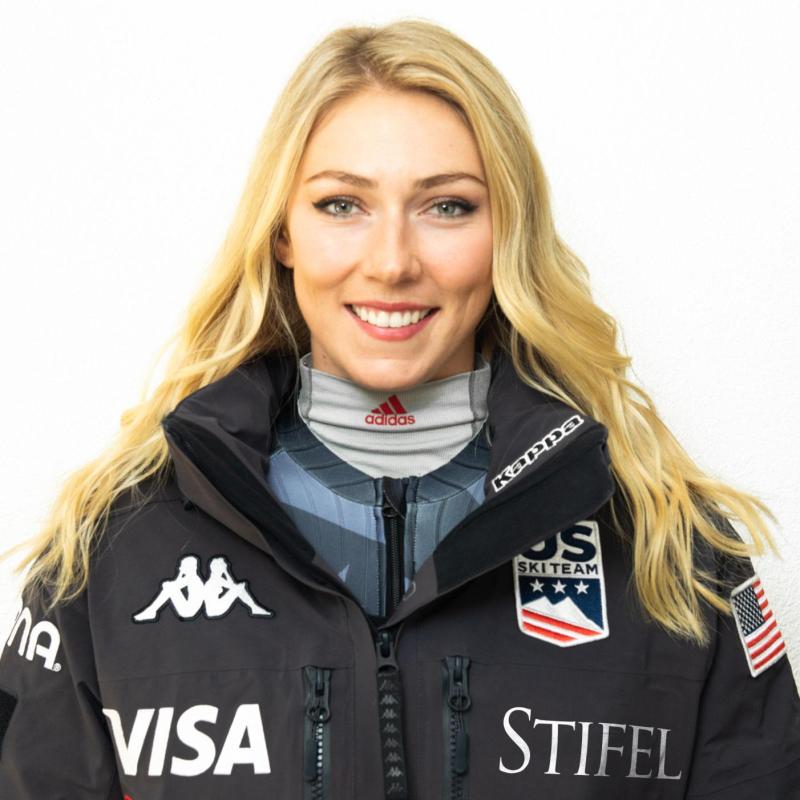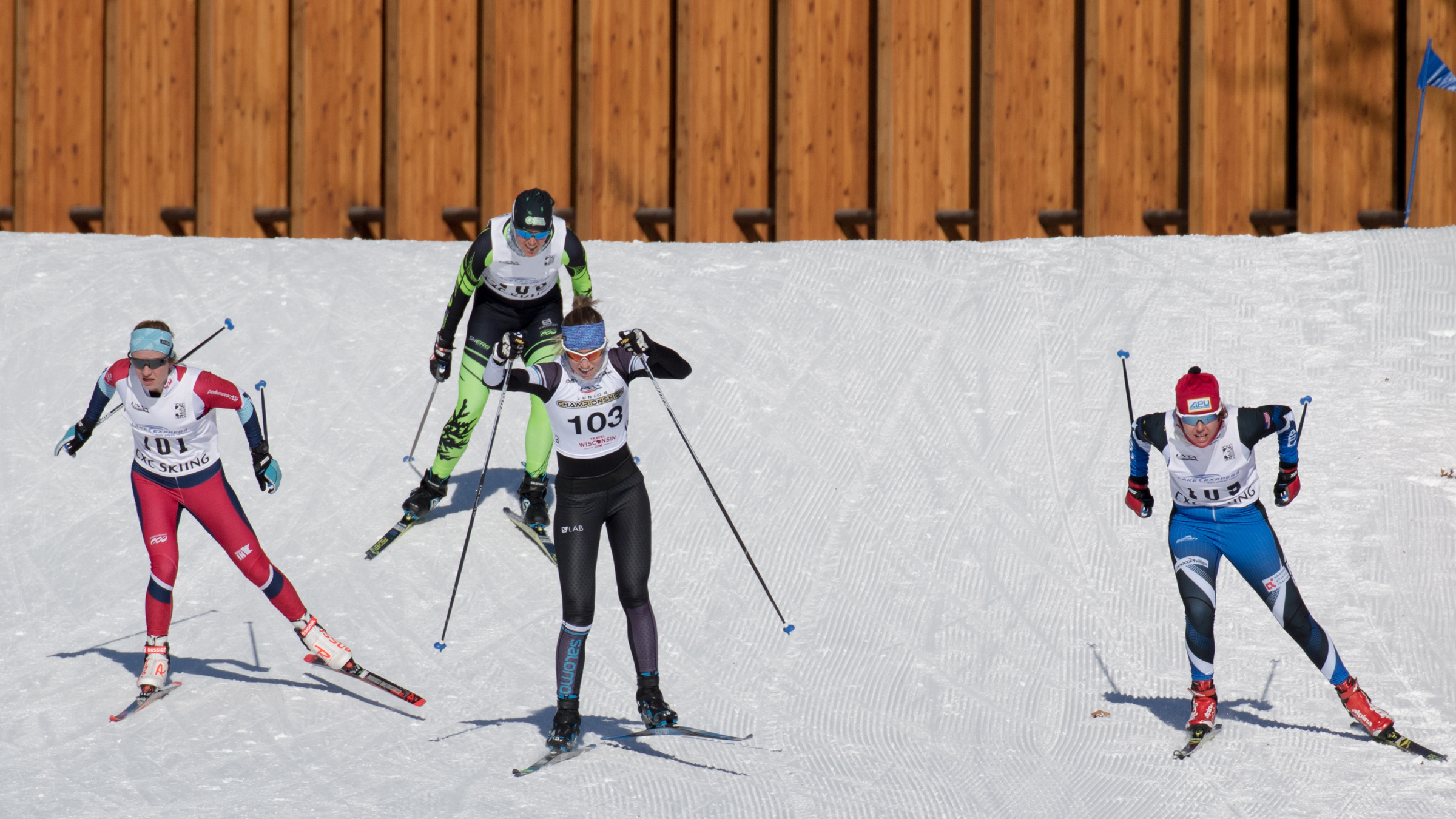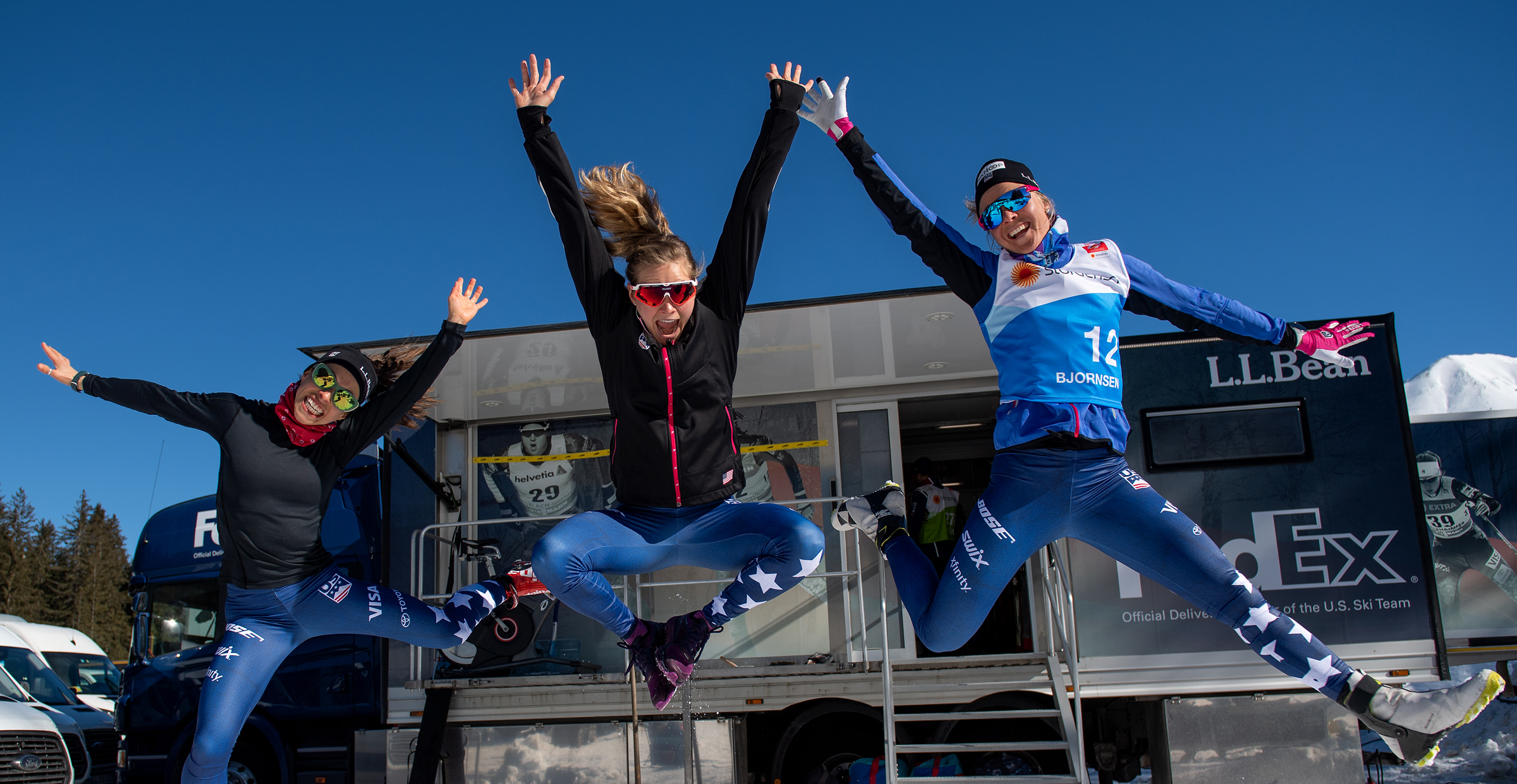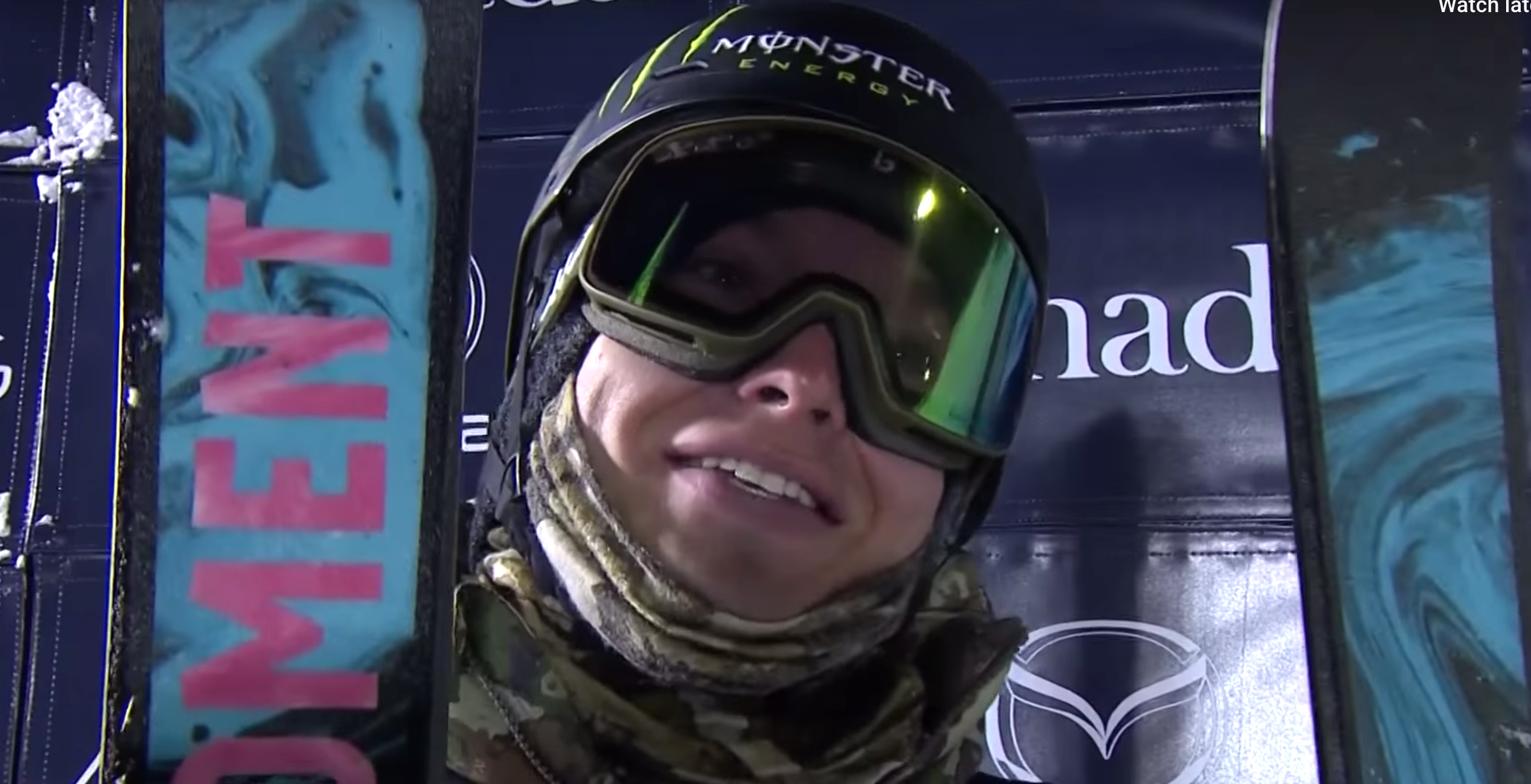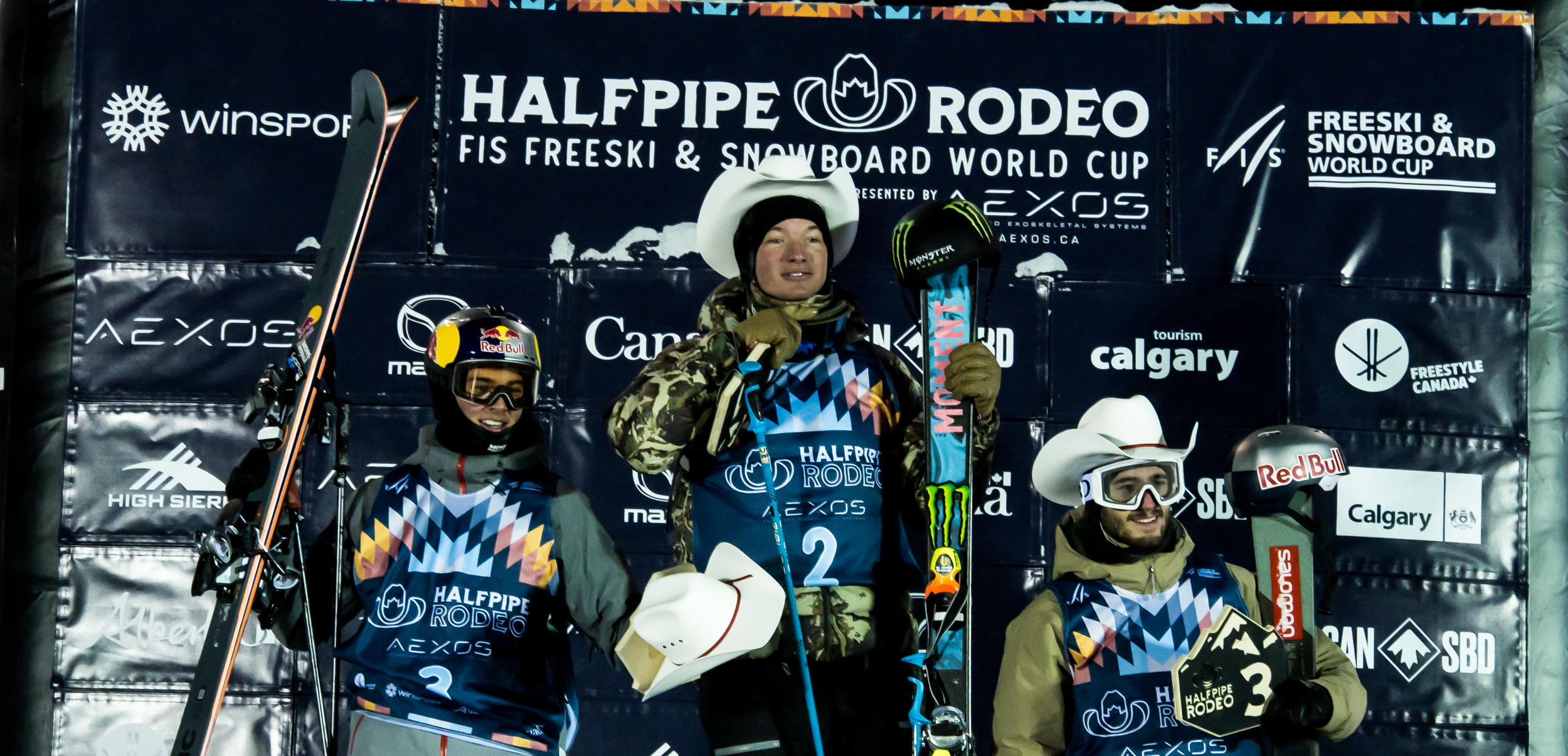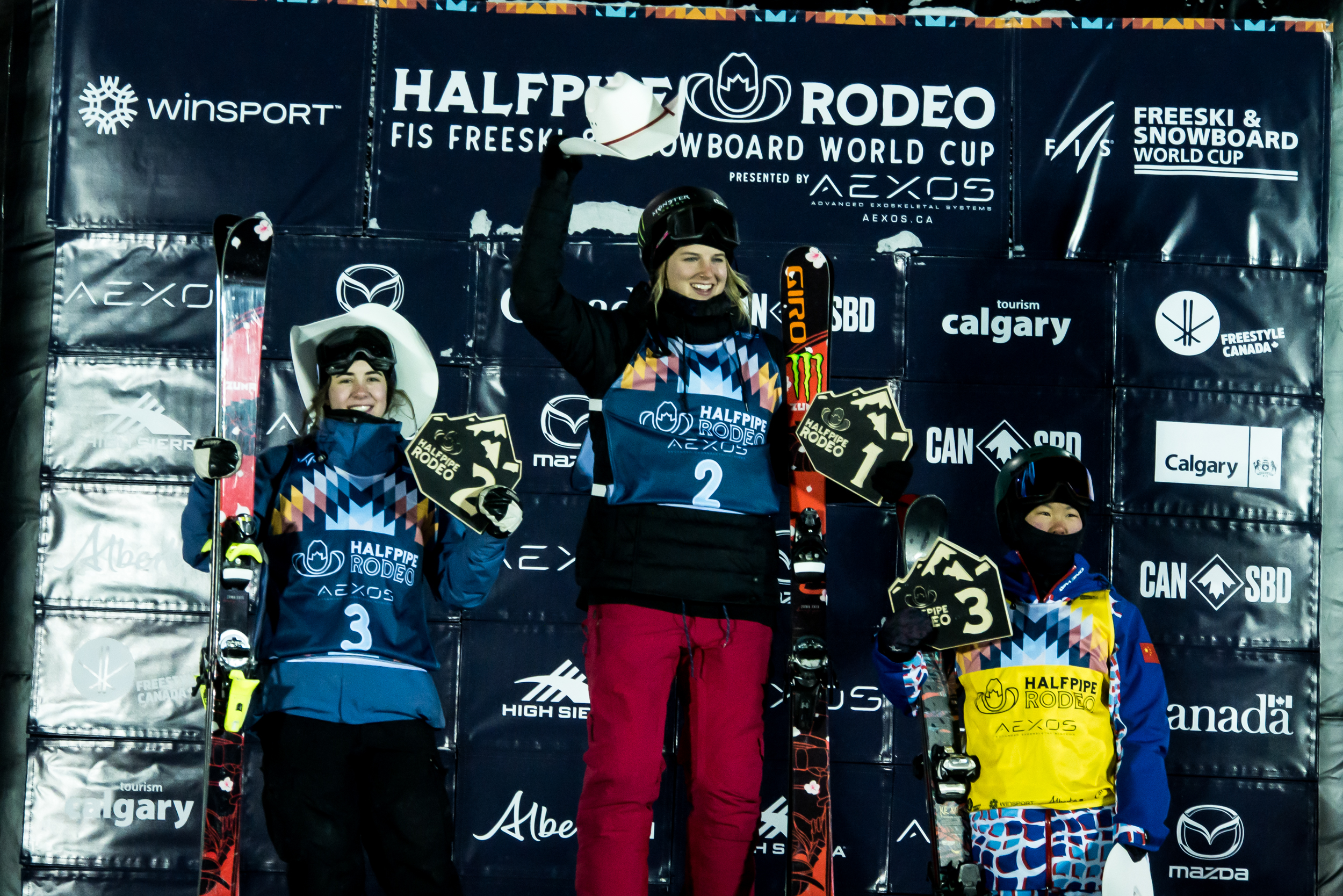NEW YORK, N.Y. – Spyder, one of the world’s most recognizable ski brands, and U.S. Ski & Snowboard, the most decorated Winter Olympic organization, today announced the launch of an exclusive store on Amazon.com offering the Spyder and U.S. Ski Team’s co-branded gear to consumers.
Spyder x U.S. Ski Team apparel and accessories are designed and constructed with the help of U.S. Ski Team athletes to deliver top results as they train to compete against the best in the world. Spyder partners with Gore-Tex, the undisputed leader in fabric technology, to deliver waterproof, windproof and breathable technology across this collection. Versatility is also infused throughout the assortment with details such as jackets with removable helmet compatible hoods and goggle pockets, ski pants with removable suspenders and hand warmer pockets. Drawing its color inspiration from European runways, the collection has a distinct color palette of olive and army green paired with pops of yellow, that give audiences more choice and the opportunity to stand out on and off the mountain.
A percentage of the proceeds from the sales of co-branded Spyder x U.S. Ski Team products supports the U.S. Ski & Snowboard’s efforts to provide resources to athletes who are inspired to be the best in the world.
“For 30 years Spyder has proudly developed and supplied product to the U.S. Ski Team,” said Nick Adcock, CEO of Spyder. “Teaming up with Amazon has allowed us to highlight these amazing athletes to a much broader audience than ever before and raise funds to support their future success with the sale of these licensed products.”
“We are delighted to be working with Spyder and Amazon,” said Dan Barnett, U.S. Ski & Snowboard’s Chief Commercial Officer. “Ski fans now have a unique opportunity to access the great looks that they see on their favorite athletes wherever they are, whenever they want!”
The Spyder x U.S. Ski Team store on Amazon.com at amazon.com/usskiteam offers a capsule collection of t-shirts, hoodies, and hats featuring the Spyder and U.S. Ski Team logos. In addition, the store offers the full Fall 2019 Spyder x U.S. Ski Team “Speed Freaks” collection for pre-order, including sweaters, jackets, snowsuits, speed suits, ski pants, and accessories for men and women.
To learn more and stay up to date on Spyder and U.S. Ski & Snowboard, please follow @SpyderActive on social media.
About Spyder
Spyder is one of the world’s most recognizable and credible outdoor sportswear brands. Focused on enhancing the ski experience both on and off the mountain, Spyder prides itself on its advanced technical composition and style. Originally founded by David Jacobs, coach of the Canadian Ski Team and Bob Beattie, coach of the United States Ski team, Spyder’s roots run deep in the ski community. Pioneering its first padded ski sweater in 1978, and sponsoring the U.S. Ski Team since 1989, Spyder offers technical ski, fitness, and lifestyle apparel and accessories for men, women, and children. The highly sought-after brand is available in department stores, sporting goods stores, and specialty retailers throughout North America, Europe, the Middle East, South Korea.
About U.S. Ski & Snowboard
U.S. Ski & Snowboard is the Olympic National Governing Body (NGB) of ski and snowboard sports in the USA, based in Park City, Utah. Tracing its roots directly back to 1905, the organization represents nearly 200 elite skiers and snowboarders in 2019, competing in seven teams; alpine, cross country, freeski, freestyle, snowboard, nordic combined and ski jumping. In addition to the elite teams, U.S. Ski & Snowboard also provides leadership and direction for tens of thousands of young skiers and snowboarders across the USA, encouraging and supporting them in achieving excellence. By empowering national teams, clubs, coaches, parents, officials, volunteers and fans, U.S. Ski & Snowboard is committed to the progression of its sports, athlete success and the value of team. For more information, visit www.usskiandsnowboard.org
About Authentic Brands Group
Authentic Brands Group (ABG) is a brand development, marketing, and entertainment company, which owns a portfolio of global entertainment and lifestyle brands. Headquartered in New York City, ABG manages, elevates, and builds the long-term value of more than 50 consumer brands and properties by partnering with best-in-class manufacturers, wholesalers, and retailers. Its brands have a global retail footprint in more than 100,000 points of sale across the luxury, specialty, department store, mid-tier, mass, and e-commerce channels and more than 4,800 branded freestanding stores and shop-in-shops around the world. ABG is committed to transforming brands by delivering compelling product, content, business, and immersive brand experiences. It creates and activates original marketing strategies to drive the success of its brands across all consumer touchpoints, platforms, and emerging media.
ABG’s portfolio of iconic and world-renowned brands includes Marilyn Monroe®, Mini Marilyn®, Elvis Presley®, Muhammad Ali®, Shaquille O'Neal®, Dr. J®, Greg Norman®, Neil Lane®, Thalia®, Michael Jackson® (managed brand), Nautica®, Aéropostale®, Juicy Couture®, Vince Camuto®, Herve Leger®, Judith Leiber®, Frederick's of Hollywood®, Nine West®, Frye®, Jones New York®, Louise et Cie®, Sole Society®, Enzo Angiolini®, CC Corso Como®, Hickey Freeman®, Hart Schaffner Marx®, Adrienne Vittadini®, Taryn Rose®, Bandolino®, Misook®, 1.STATE®, CeCe®, Chaus®, Spyder®, Tretorn®, Tapout®, Prince®, Airwalk®, Vision Street Wear®, Above The Rim®, Hind®, Thomasville®, Drexel®, and Henredon®. For more information, please visit ABG-NYC.com.
